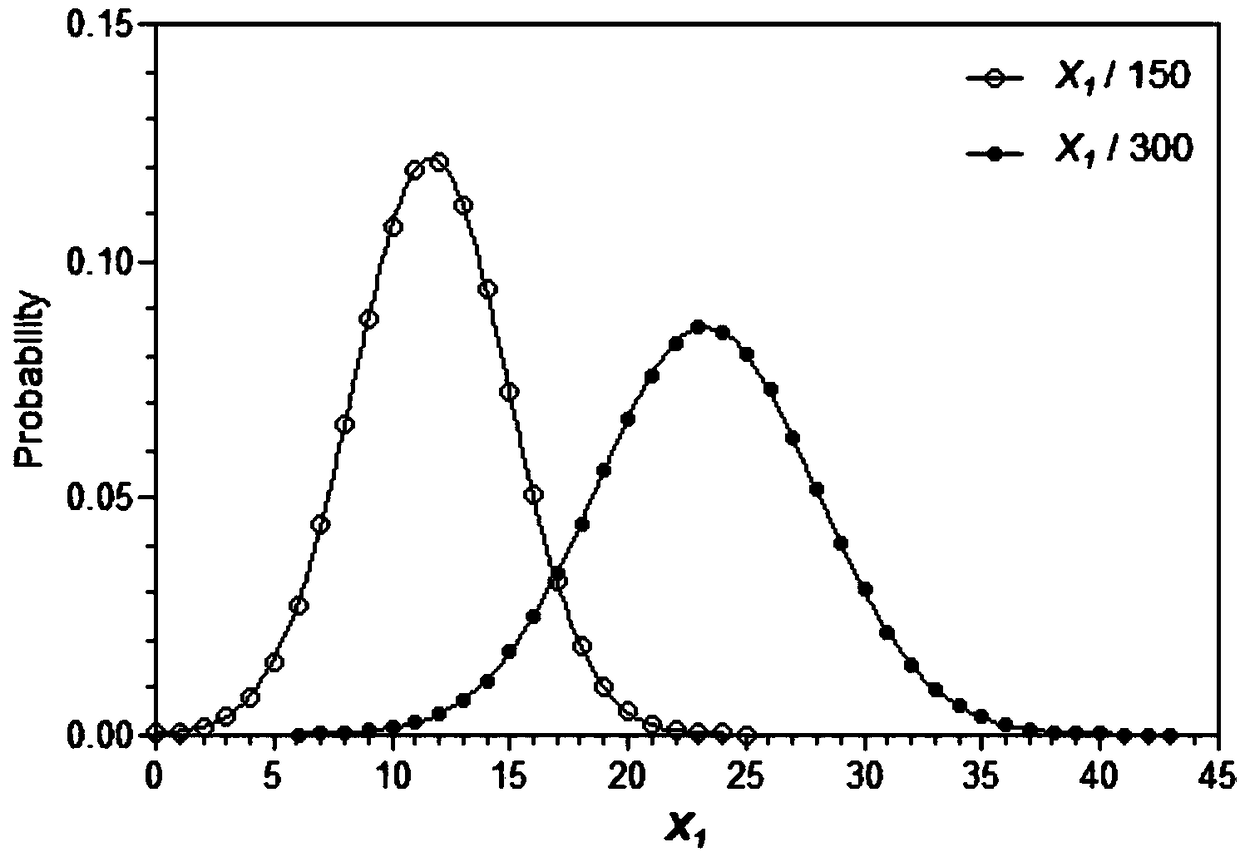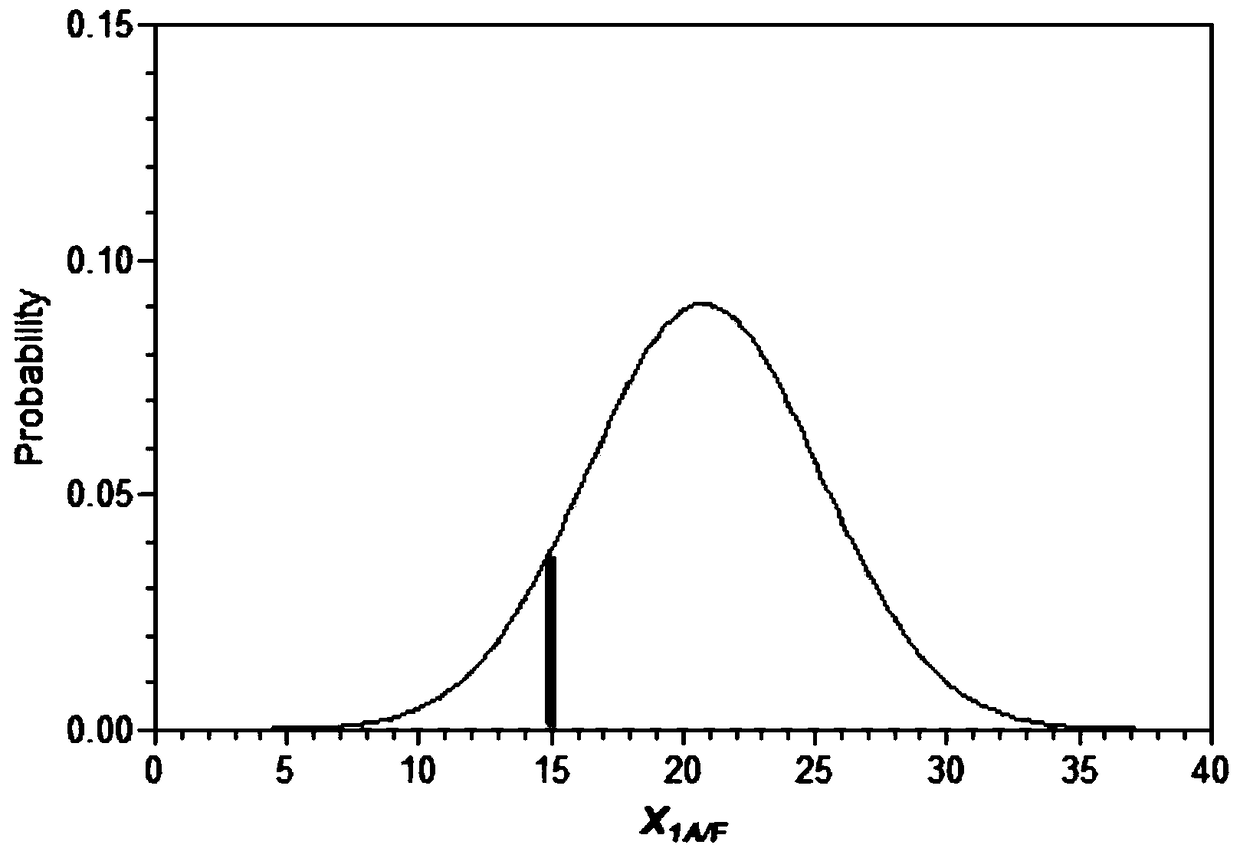Paternity identification method based on fetal free DNA in peripheral blood of pregnant women
A technology for maternal peripheral blood and paternity testing, applied in the field of paternity testing based on fetal cell-free DNA in pregnant women's peripheral blood, can solve the problems of lack of evidence value evaluation system, lack of statistical models for genetic evidence value indicators, misjudgment, etc.
- Summary
- Abstract
- Description
- Claims
- Application Information
AI Technical Summary
Problems solved by technology
Method used
Image
Examples
Embodiment 1
[0123] In a rape-induced pregnancy case, the rape suspect A, the pregnant woman M (the victim) and the pregnant woman's partner F were involved. Carry out paternity test according to the method provided by the present invention, the steps are as follows:
[0124] Step 1, DNA extraction:
[0125] A commercially available DNA extraction kit was used to extract genomic DNA from the exfoliated cells of pregnant woman M's throat swab, and to extract cfDNA from the peripheral blood of pregnant woman M; at the same time, the genomic DNA from the peripheral blood of rape suspect A and pregnant woman's partner F was extracted.
[0126] Step 2, next-generation sequencing:
[0127] For the genomic DNA of M, A, and F, the library was built according to the resequencing of genomic DNA, and the average sequencing depth was not less than 10 times; the peripheral blood cfDNA of M was captured and built using the Agilent whole exome capture sequencing kit. Library sequencing, the average...
PUM
 Login to View More
Login to View More Abstract
Description
Claims
Application Information
 Login to View More
Login to View More - R&D
- Intellectual Property
- Life Sciences
- Materials
- Tech Scout
- Unparalleled Data Quality
- Higher Quality Content
- 60% Fewer Hallucinations
Browse by: Latest US Patents, China's latest patents, Technical Efficacy Thesaurus, Application Domain, Technology Topic, Popular Technical Reports.
© 2025 PatSnap. All rights reserved.Legal|Privacy policy|Modern Slavery Act Transparency Statement|Sitemap|About US| Contact US: help@patsnap.com



